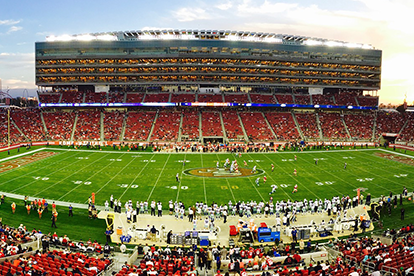Media

Sports Teams Thrive at Taxpayer Expense
While sports teams across the county reap the benefits of lavish government subsidies to build stadiums, taxpayers bear the brunt of the cost, according to a working study by George Mason University researchers.
Considering a host of historical events and economic studies, the research examines the adverse, and often overlooked, effects of publicly financed sports stadiums. “In spite of the accelerating trend in stadium subsidies […] the body of academic literature consistently finds they have little to no economic impact,” said Michael Farren and Anne Philpot of the Study of American Capitalism.
Prior to 1950, sports stadiums were financed almost entirely by private capital. By 1992, 77 percent of all U.S. sports stadiums were in some way subsidized by taxpayers. Subsidies are often handled at the municipal level and involve direct cash payments for construction costs as well as property tax abatements, land grants and loan guarantees.
Proponents of publicly funded stadiums argue that subsidies will revitalize weak municipalities, attract fans and tourists from across the country and create jobs in construction and food services. However, the study used a cost-benefit analysis that assessed hidden costs often ignored by advocates of subsidization.
For instance, local governments use taxpayer funds as collateral for sports teams’ debt, an investment that often reduces the city’s credit rating. Building projects may also cost more than initially expected and take longer to build. Such was the case in Hartford, Connecticut when the construction of Dunkin’ Donuts Park took one extra year and cost $10 million more to complete.
Public funds used to subsidize risky stadium investments could be better allocated to support projects like public utilities or emergency response services.
Pennsylvania is one of many states that have fallen victim to the illusory promises of increased economic activity that sports teams offer. Between 1995 and 2010, Pennsylvania taxpayers paid more than $1 billion to sports teams across the state.
In 1997, despite the majority of Pittsburgh residents’ disapproval of publicly funded sports stadiums, The Allegheny Regional Asset District paid $13.4 million a year for 30 years to pay for the construction of two new sports stadiums.
While sports teams pay a share of the cost, taxpayers, unfairly, foot the majority of the bill. Pennsylvania—already a leader in corporate welfare—simply can’t afford to subsidize millionaire athletes and billionaire owners.